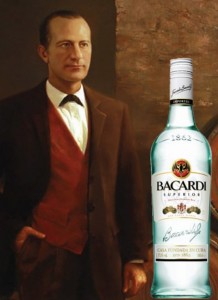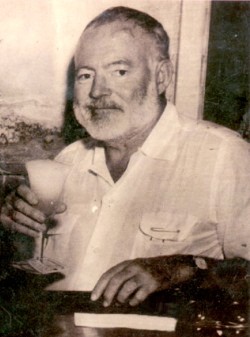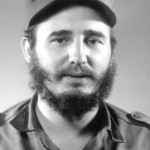Bacardi is the best-selling rum brand in the world: is achieved in 150 countries and produces 20 million dollars in profits every year.
But not a drop of liquor is sold in Cuba, where the founder of the company Facundo Bacardí opened the first distillery in 1862, in a small restaurant with aluminum roof and the dirty floor, at the slaughterhouse Street in the city of Santiago.
The story about the development of the mark is contained in the book “Bacardi and the Long Fight for Cuba” (Publisher Viking, 365 pages) of Tom Gjelten.
With a broad and rigorous report, rich details and sometimes unusual, Veteran correspondent of national public Radio tells the story of the Bacardi family, whose product helped create the Cuban spirit until Fidel Castro nationalized the company in 1960.
The Bacardi went to court to preserve its international brand and eventually managed to raise an Empire with operations in Puerto Rico, Mexico, Brazil, and the Bahamas.
“Not even think to register the Bacardi brand, so we lost”, said Castro years later. “We had the factory that produced real Bacardi rum, but could not retain its name as such.”
Facundo Bacardí was the first Cuban Mayor in the city of Santiago and was a pioneer in developing the rum of Cuban style, noted for being light, dry and smooth. He also invented a system of filter with coal and was the first to aging liquor in oak barrels.
Bacardi won international awards after 1900 and soon became the ron “made famous Cuba”.
The prohibition of the sale of alcohol in United States pushed their citizens to run Cuba, thirst for Bacardi.
An announcement of the time, features a bat – the logo of the brand, describing Gjelten as scary – loading to Uncle Sam in its talons with an empty glass from Florida to Cuba.
For the 1935 newspaper The New York Times quoted Bacardi as a proper name that entered the lexicon of United States as a generic, like term passed with Kleenex. Ernest Hemingway generally mentioned the Bacardi in his novels.
Eager to reach the American market again without having to pay taxes, the company established a distillery in Puerto Rico in 1936.
According to Gjelten, Bacardi discovered that the key to consistency in the flavor of their rum was in the cane molasses.
After overcoming problems in the distillation process, engineers managed to correct the discrepancies so that ron had a taste identical to that occurred in Cuba anywhere to do.
The Bacardi was opposed by the Cuban dictator Fulgencio Batista and Fidel Castro, supported, even allowing some of its workers to join their rebel forces.
Vilma Espin, former wife of the current Cuban President Raul Castro, was the daughter of the accounting officer of Bacardi and one of the members of the family weave socks for the rebels under the command of Castro who fought against the Batista government.
The rebels issued a decree that would attack not Bacardi facilities, and the executive head, José “Pepín” Bosch, accompanied Castro on his first trip to United States since it took power in 1959. However, Bosch broke up because he was afraid to address that took the Castro Government.
After nationalizing Bacardi, Cuba began producing rum Havana Club, the brand the Arechabala family, producing Bacardi competitors who fought not by the name after the nationalization.
Eventually, Bacardi purchased the rights to the name of Havana Club the Arechabala family and began selling his own version of Havana Club in United States, triggering new legal battles with Cuba.
Gjelten/AP/Internetphotos/TheCubanHistory.com
The Cuban History, Hollywood.
Arnoldo Varona, Editor







